In some areas of Nigeria, temperatures can soar up to 118 degrees Fahrenheit. For many of us, temperatures like this might seem like a death sentence for our plants, but there are dozens of Nigerian flowers that not only survive but thrive in this heat.
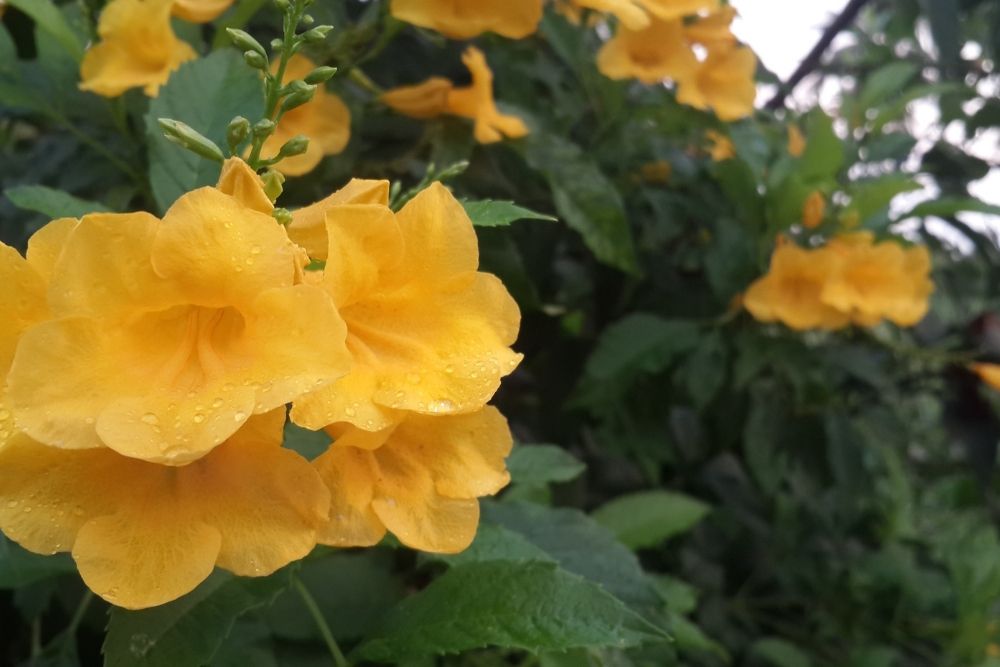
If you’re interested in learning more about the kinds of flowers that grow in Nigeria, you’re in luck! We’ve made a list of 25 stunning flowers that are either commonly grown in, or native to, this African country.
1. Yellow Trumpet (Costus Spectabilis)
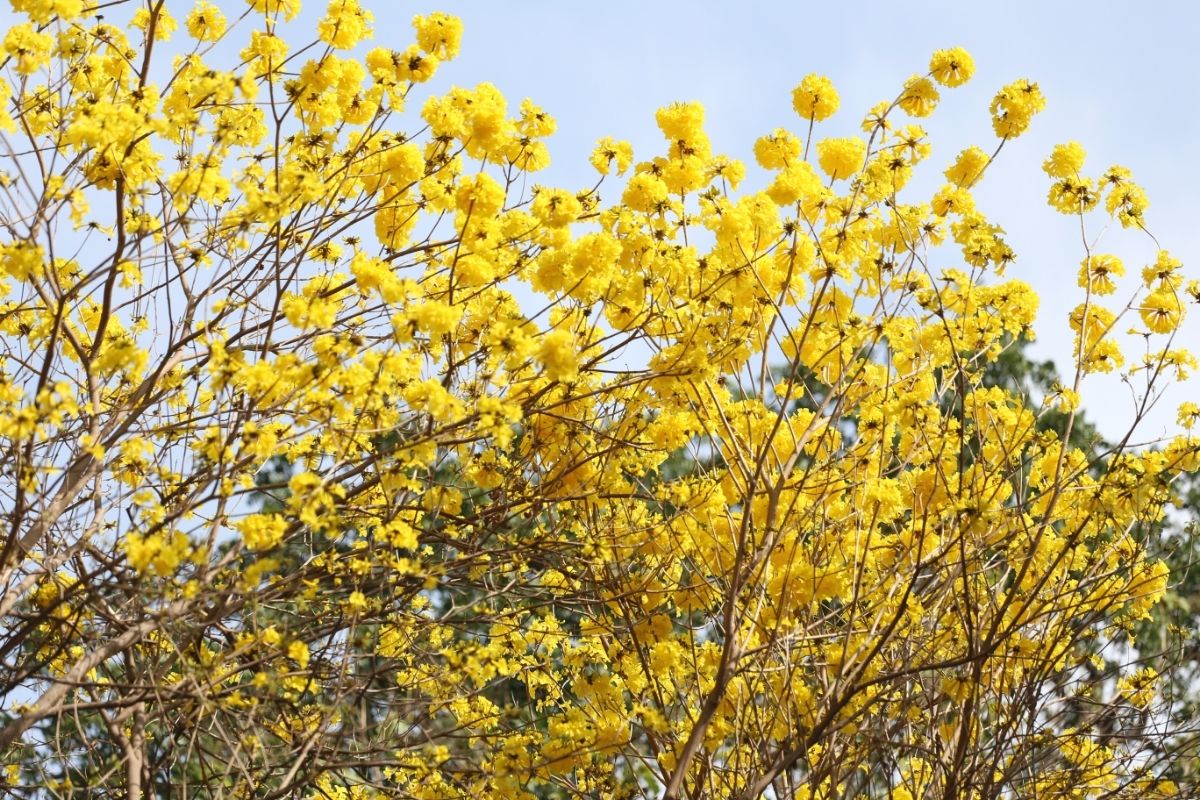
The Yellow Trumpet’s common name is an accurate description of this brightly-colored Nigerian flower. The blooms are shaped like bright yellow trumpets and typically flower between summer and fall. These flowers grow from the Yellow Trumpet Bush – a perennial shrub.
2. Calla Lily (Zantedeschia Aethiopica)
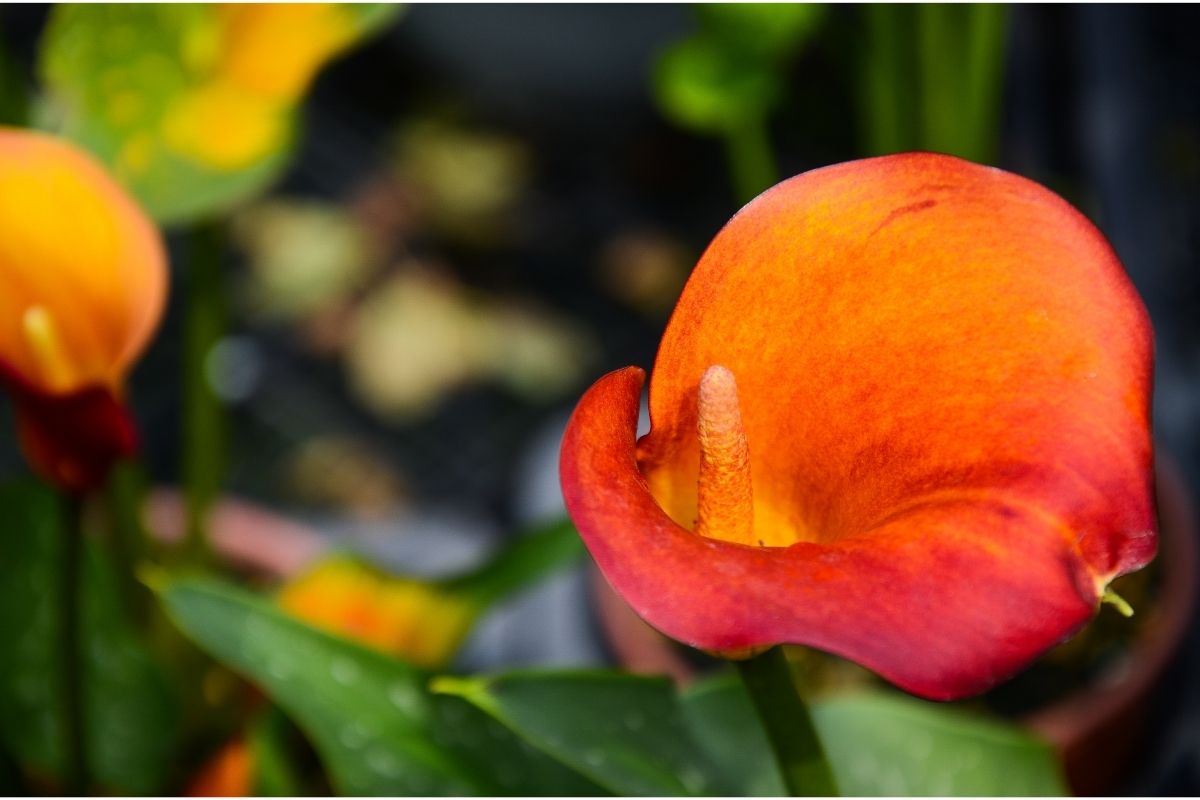
Calla Lillies are native to South Africa, but they are also abundant in the West African country of Nigeria. Despite having the word ‘lily’ in its common name, the Calla Lily is not actually a lily.
It belongs to the Zantedeschia genus, which has now been introduced to all continents worldwide with the exception of Antarctica.
3. Amaryllis (Amaryllis)

The Amaryllis is a flowering plant with an interesting history. Its name is Greek for ‘to sparkle’ and while it’s native to South Africa, it is primarily found on the Western Cape, which explains why it’s so popular in Nigeria. Amaryllis blooms are usually bright red and show up during the warmer seasons like spring and summer.
4. Red Acalypha (Acalypha Hispida)
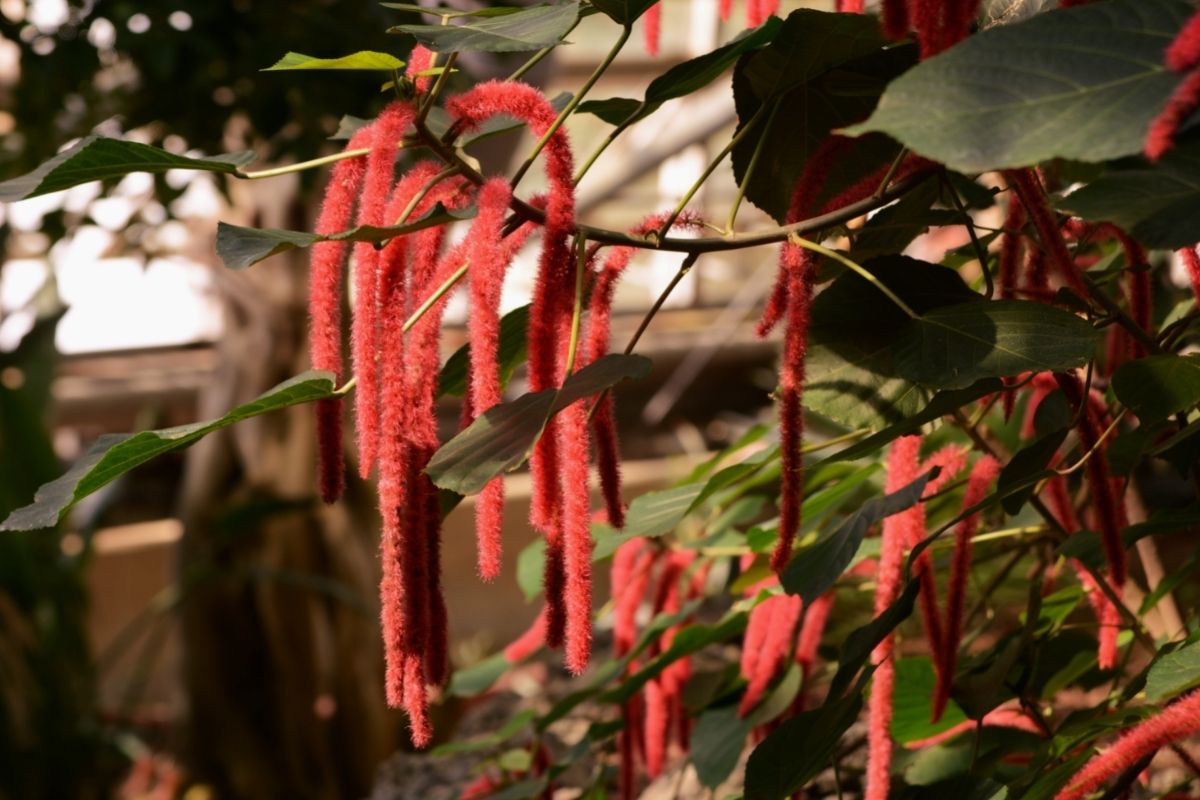
Red Acalypha is also known as the Chenille plant. It is an evergreen flowering shrub that produces pink-red flower clusters.
Red Acalypha has been used in traditional medicine for a long time, with many people incorporating parts of the plant into treatments for various ailments. However, some parts of the plant can be mildly toxic to humans.
5. Ixora (Ixora Coccinea)
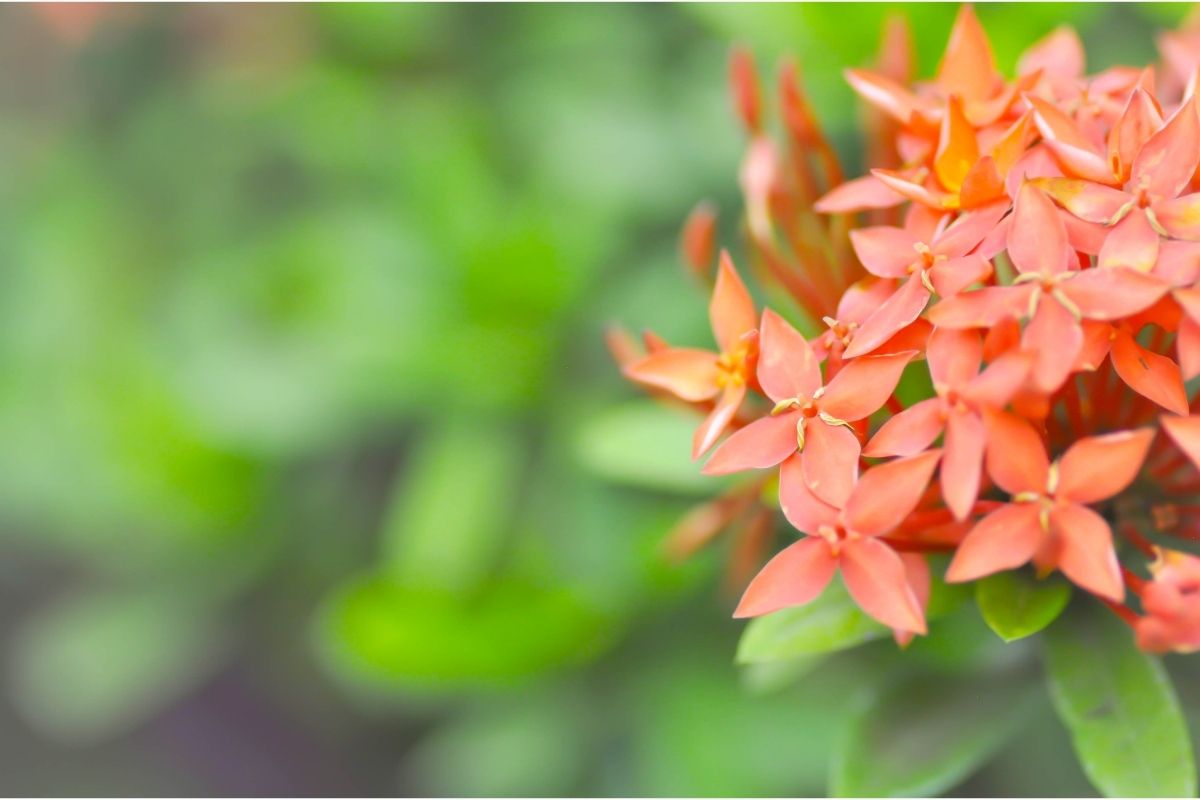
Ixora coccinea is another flowering shrub, from which reddish-pink blooms can be seen growing across numerous countries. This flowering plant can be found in Sri Lanka, India, and Bangladesh as well as Nigeria. In recent years, it has become an extremely popular choice of garden shrub in South Florida.
6. Sunflower (Helianthus Annuus)
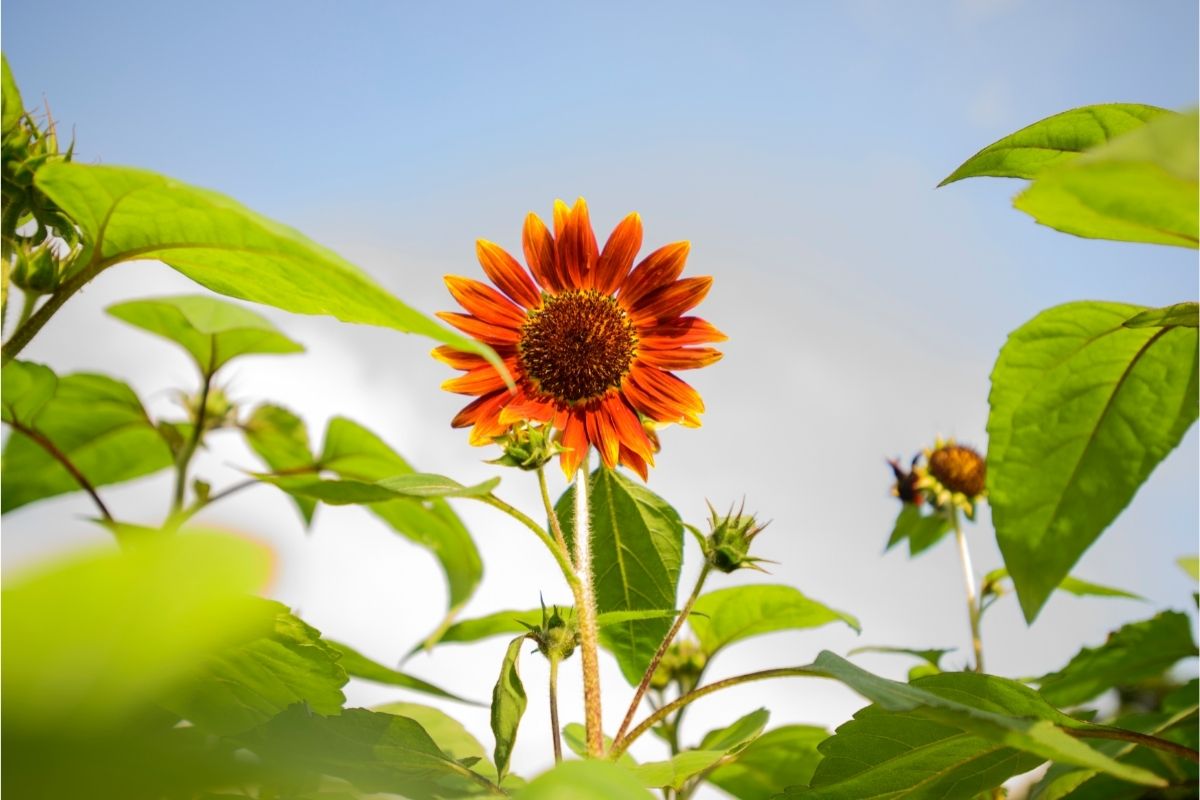
The sunflower is a bloom that is familiar to many people all over the world. But did you know that these joy-bringing flowers grow in Nigeria? Sunflowers are actually native to North America, so it’s a testament to their hardiness that they can also thrive in the vastly different climate of Nigeria.
7. Croton (Codiaeum Variegatum)
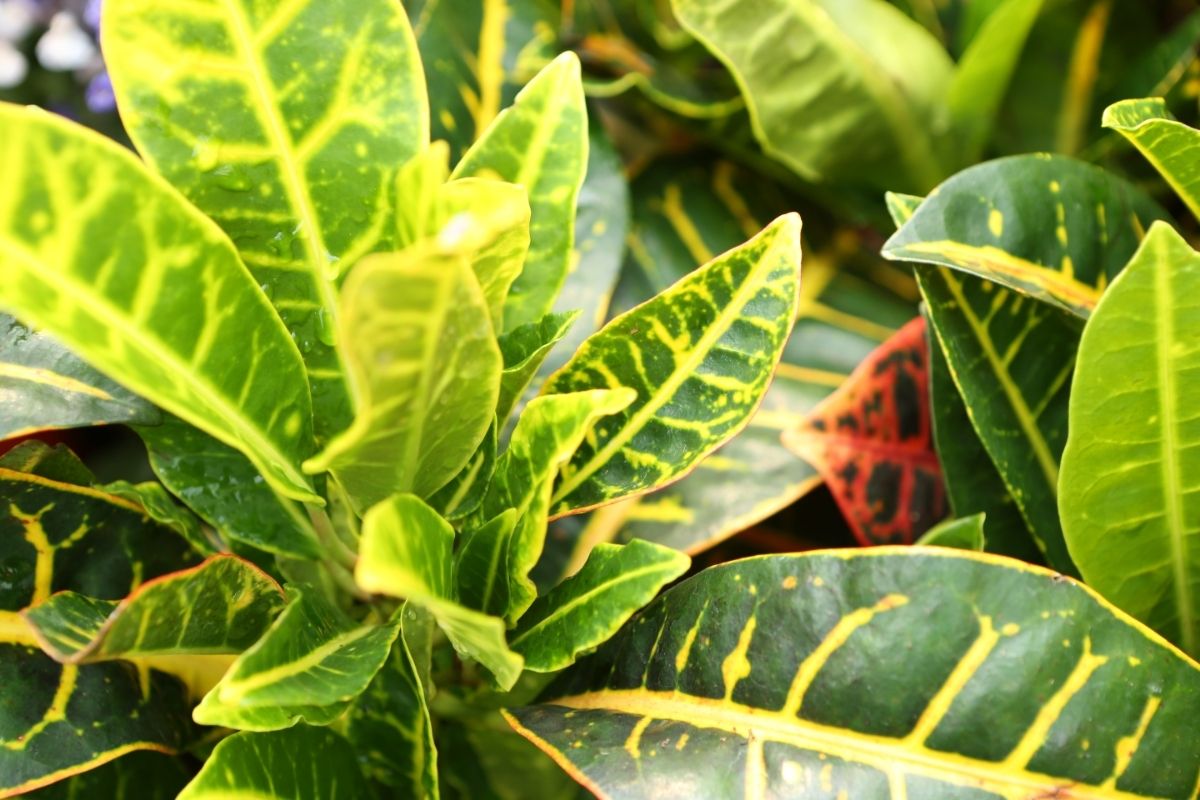
Croton is an easily recognizable plant because of its tiny yellow flowers that look like stars thanks to their five, pointed petals. Crotons are best grown as outdoor flowers because the plants don’t tend to bloom when grown inside. Although common in Nigeria, these plants are native to Malasia.
8. Aloe Vera (Aloe Vera)
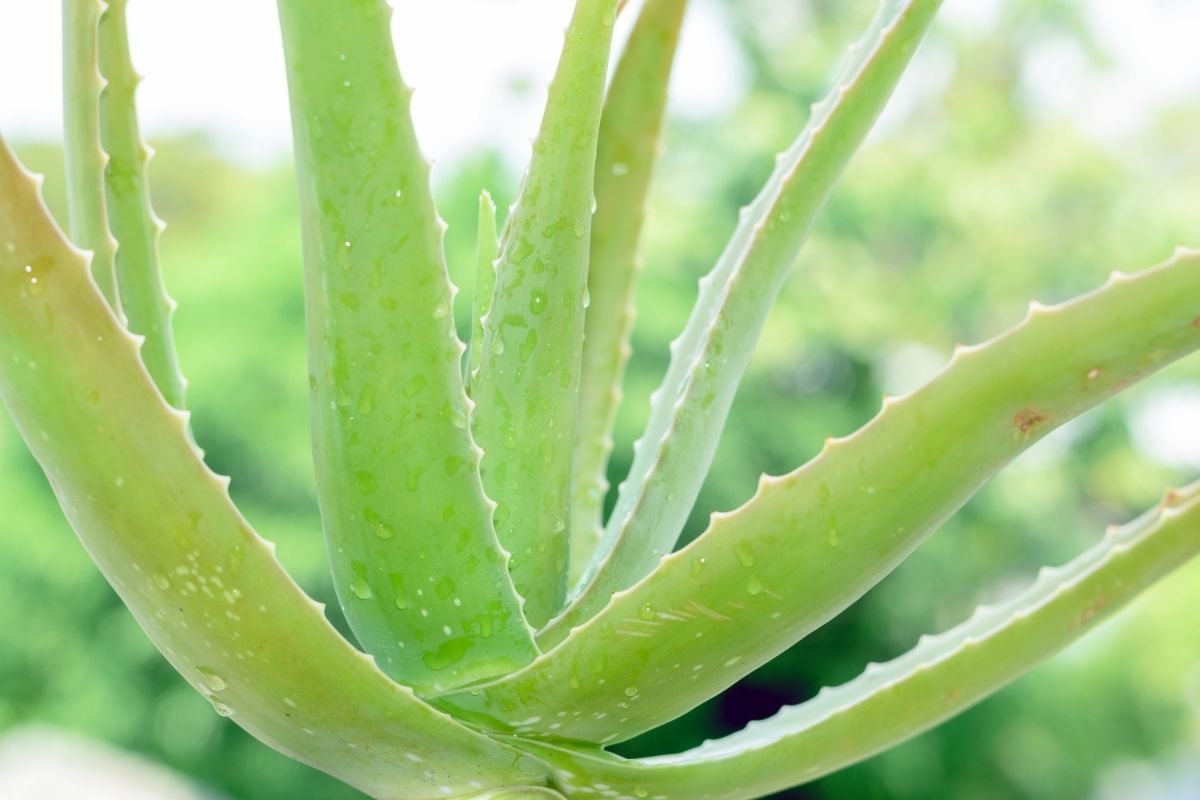
Aloe Vera plants are most widely known for the jelly-like substance inside their leaves, but these plants also produce beautiful flowers. The flowers are bell-shaped and usually an orange-pink color, but they only appear once the plant has reached maturity at approximately 4 years.
9. Purple Heart (Tradescantia Pallida)
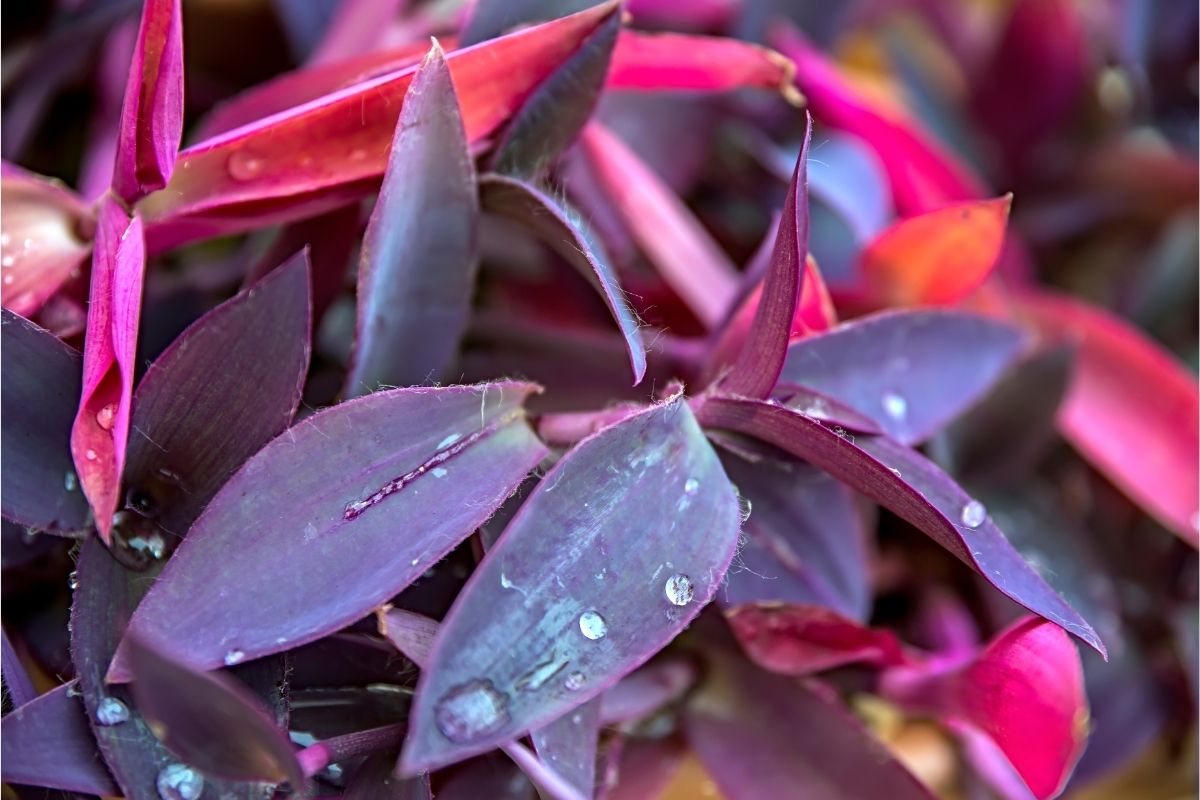
Purple Heart is so named because of its three-petaled, heart-shaped flowers. These flowers are light purple in color, so they really do look like purple hearts! In many areas, Purple Heart is considered an invasive plant, and it’s a common sight in Nigeria despite originally being native to Mexico.
10. Crown Of Thorns (Euphorbia Milii)
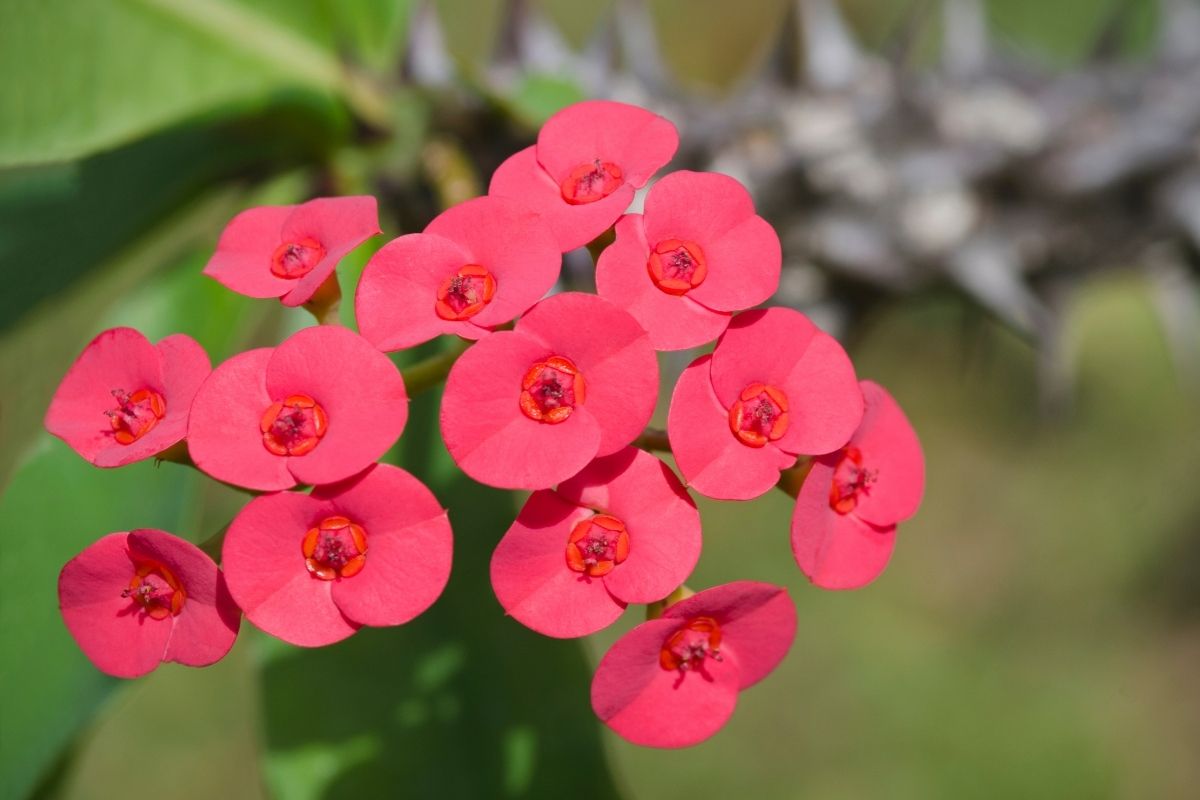
Crown of Thorns might sound like an intimidating name for a flowering plant, but the blooms of Crown of Thorns (also known as the Christ Plant) are beautiful. Ranging from pink to bright red, these flowers bloom year-round. The plant is, however, poisonous, and even the honey made from the flowers can be toxic.
11. Plumbago (Plumbago Auriculata)
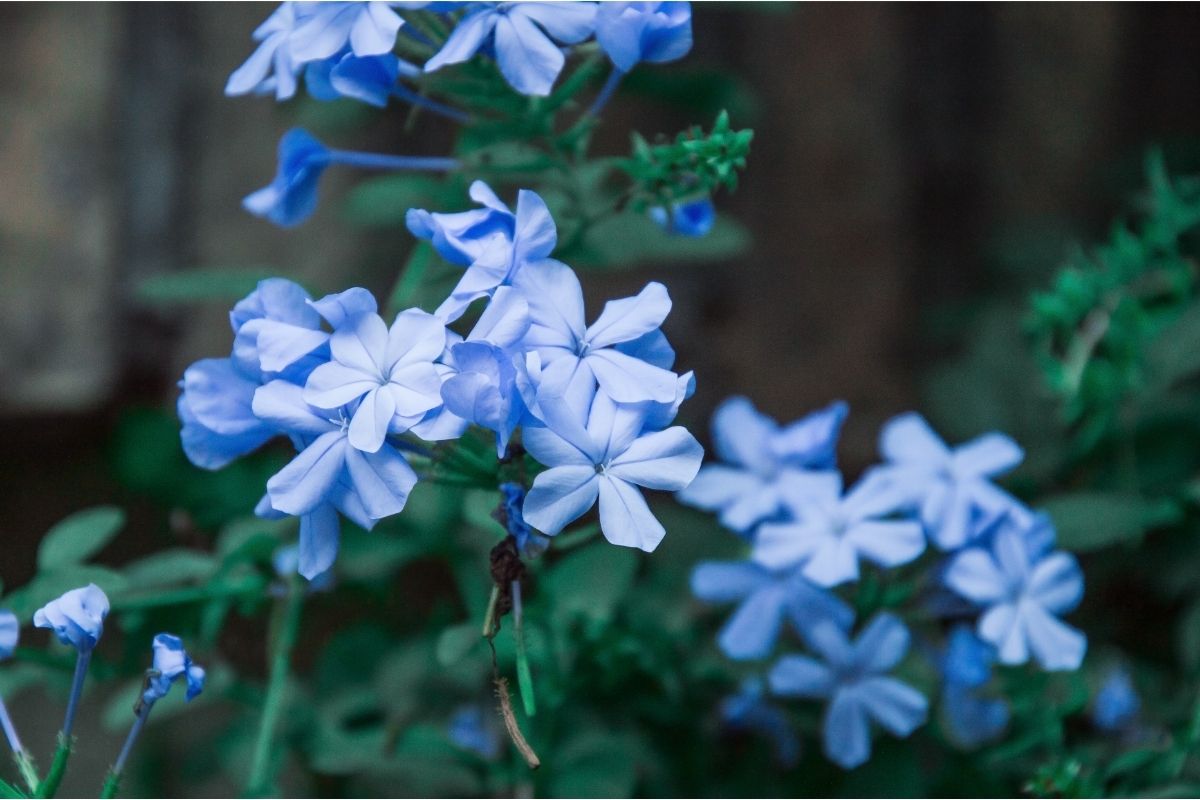
Plumbago is also known as Leadworts, and it’s actually an entire genus of flowering plants made up of between 10 and 20 species. They grow abundantly in Nigeria, which makes sense because these flowers prefer to grow in temperate and warm climates. It’s very fast-growing, giving it the potential to become invasive.
12. Anthurium (Anthurium Andraeanum)
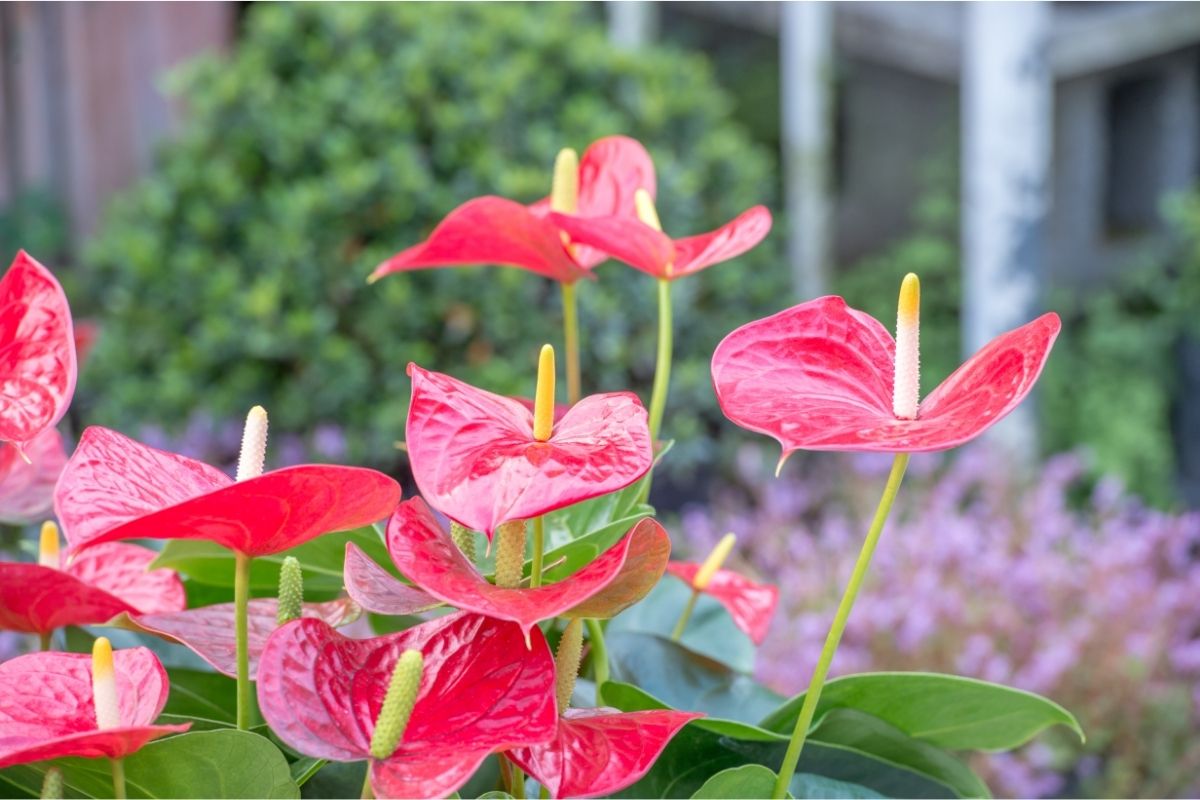
Anthurium is a very large flower genus comprising over 1,000 individual plant species. However, Anthurium andraeanum is one of the most widely-grown flowers in Nigeria. It is also known as the Flamingo Flower and the Laceleaf flower because of its elaborate red petals.
13. Mussaenda (Mussaenda Erythrophylla)
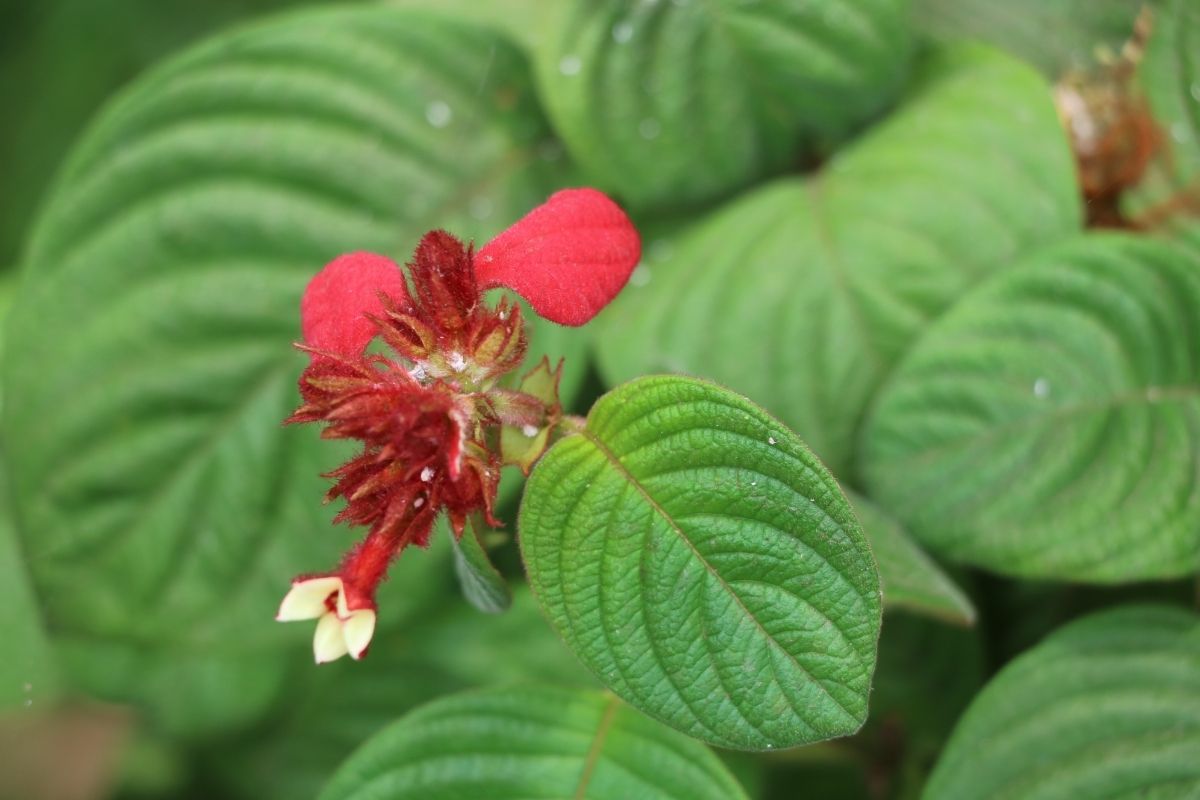
Mussaenda is often called Tropical Dogwood because it prefers warm climates. The flowers form white, pink, and red clusters that thrive in full sunshine. This plant is native to West Africa, which is why it’s one of the most commonly observed plants in Nigeria.
14. Cordyline (Cordyline Fruticosa)
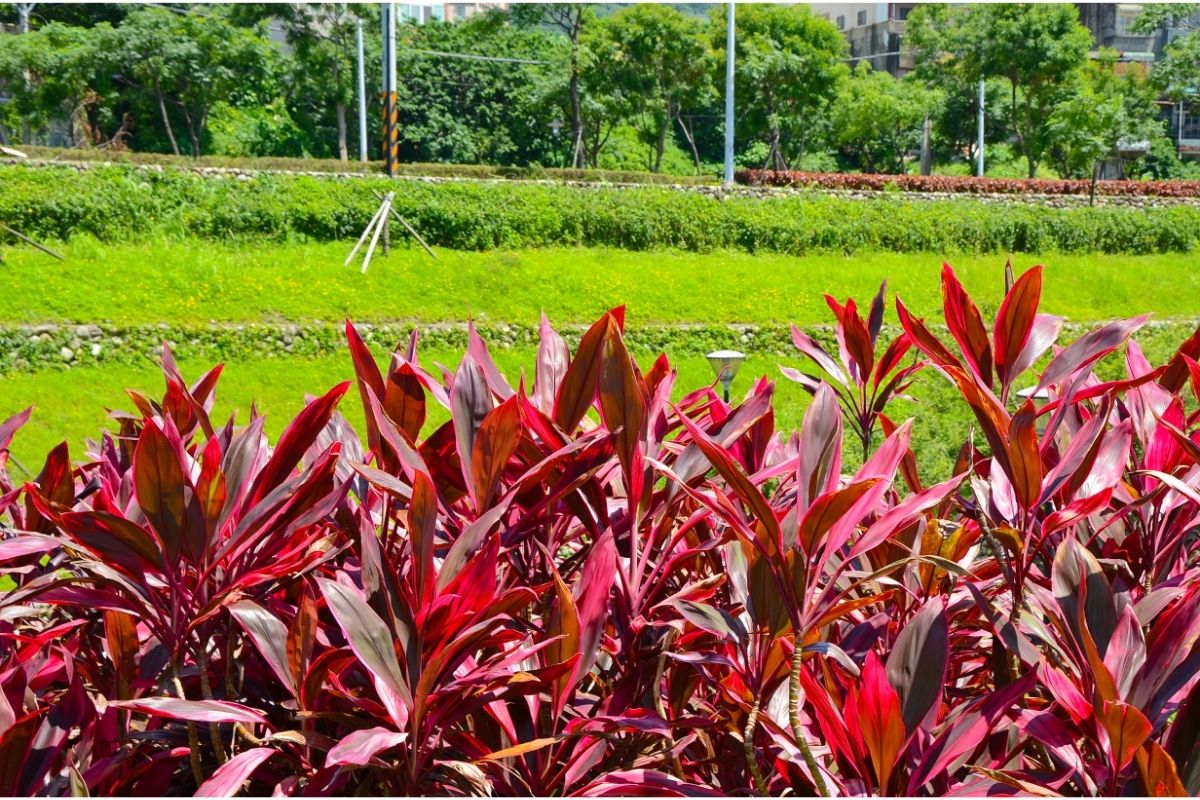
Cordyline is a fascinating-looking plant that somewhat resembles a pink-tinged version of your average spider plant. It favors warm, tropical areas, so it grows well as an outdoor plant in Nigeria as well as an indoor plant.
15. Hibiscus (Hibiscus Rosa-Sinensis)
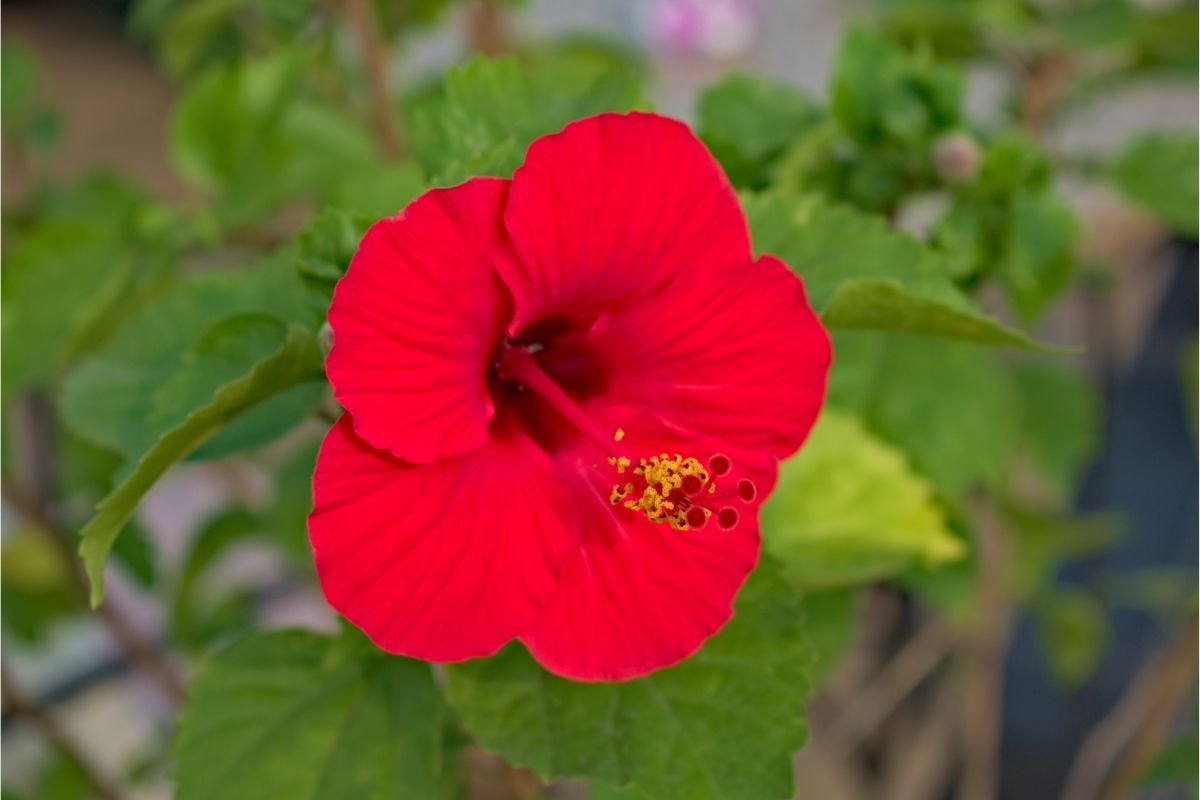
Much like the Yellow Trumpet flower, Hibiscus plants produce flowers that are trumpet-shaped. However, the flowers of the Hibiscus plant are usually bright red in color, although they can also be orange, pink, or even white. Hibiscus grows best in tropical and subtropical climates.
16. Chrysanthemum (Chrysanthemum Indicum)
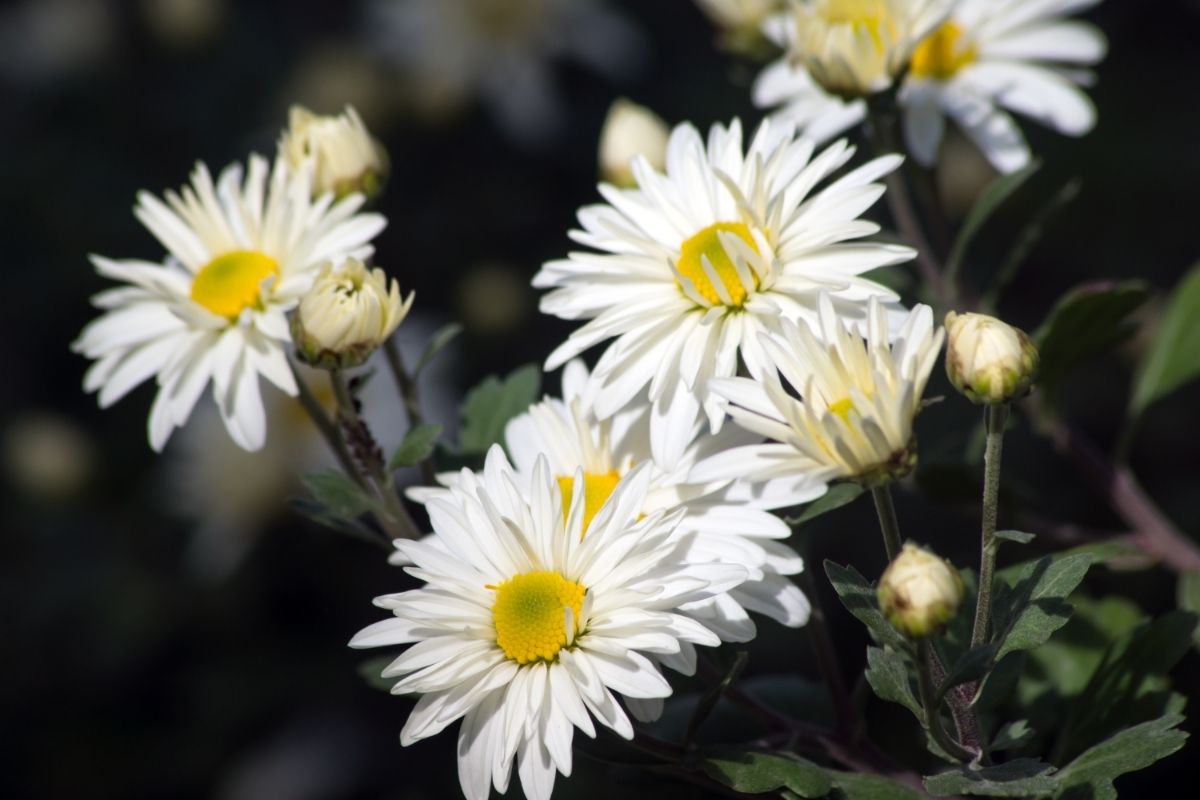
Chrysanthemum flowers look like fluffy, brightly-colored spheres that eventually relax into more open blooms. There is a lot of variation in terms of color.
While some chrysanthemums can be white or pale blue, others are more vibrant, with red and orange hues. Chrysanthemums were first cultivated in China but are now commonplace in Nigeria.
17. Celosia (Celosia Argentea)
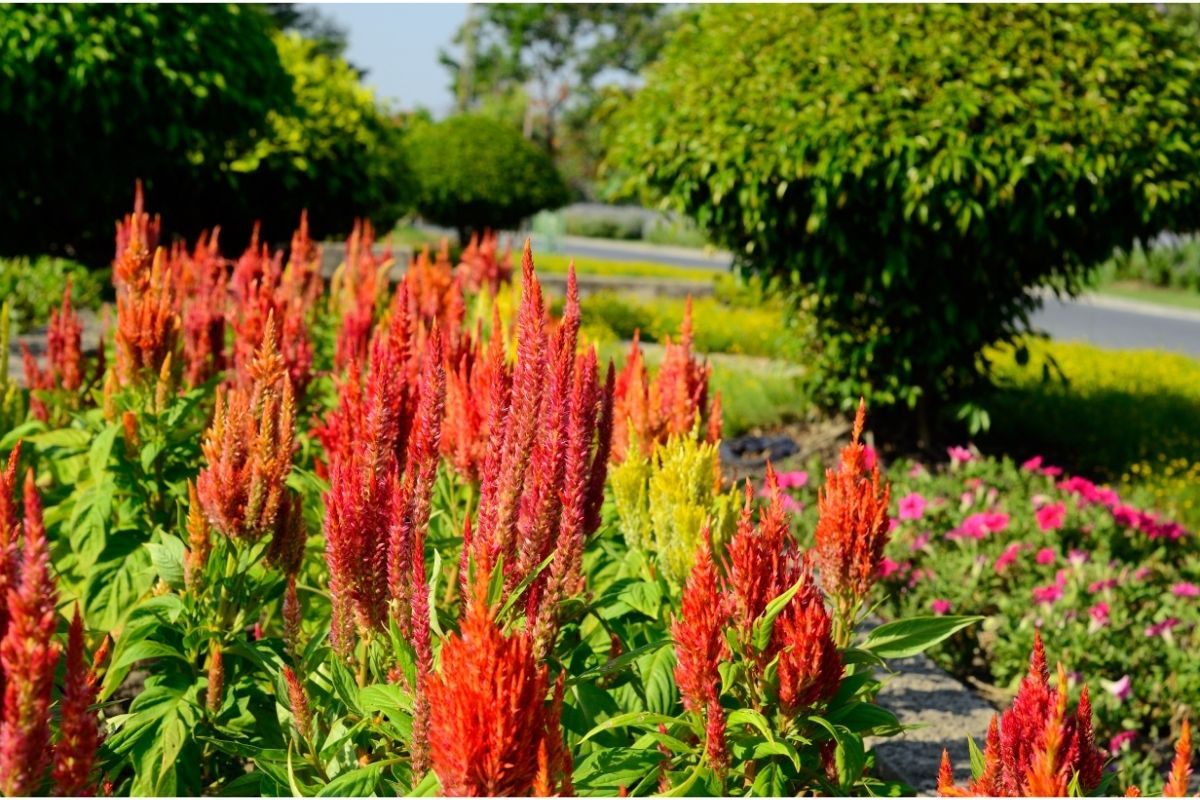
Celosia flowers are also known as woolflowers. This is because of their plume-like appearance. They can bloom in many different colors, including yellow, pink, red, and orange. Some members of the Celosia genus are harvested as vegetables in West Africa, including Nigeria.
18. Shameplant (Mimosa Pudica)
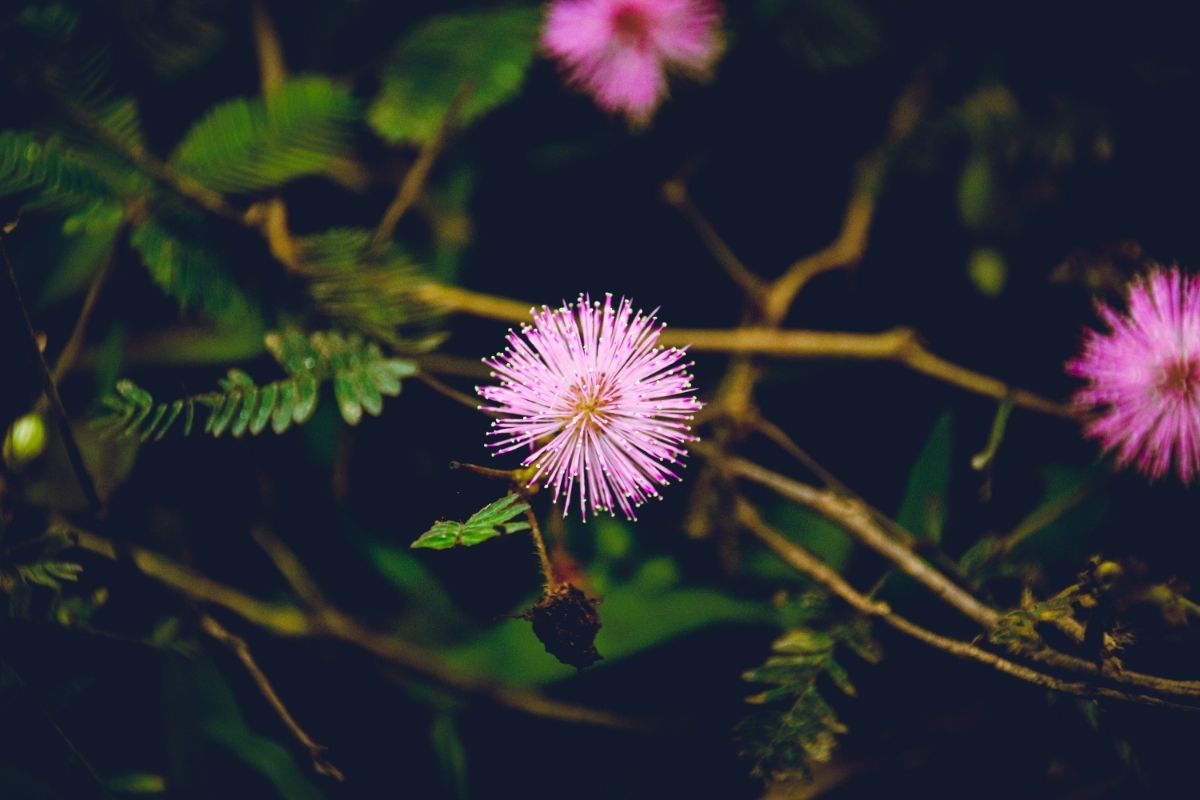
The unfortunately-named Shameplant, often called by its scientific name, Mimosa pudica, instead, can be found in Nigeria. This plant is called the Shameplant because its flowers often droop and close up at night. These flowers are typically purple and pink.
19. Yellow Bush (Lupinus Arboreus)
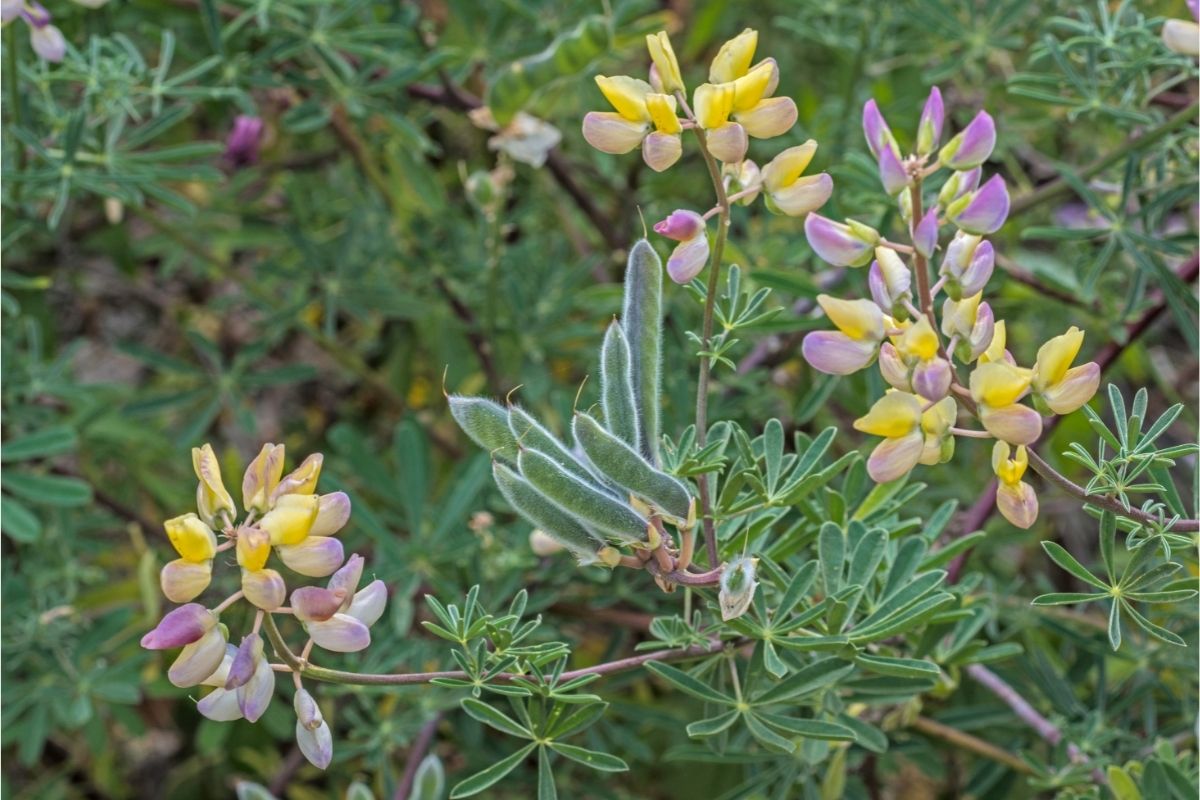
Yellow Bush’s name is quite self-explanatory. This is a flowering plant and also technically a legume, named Yellow Bush because of its attractive yellow flowers. It is native to California but is present in Nigeria. It grows well in dry, sandy areas like sand dunes.
20. Gloriosa Lily (Gloriosa Superba)
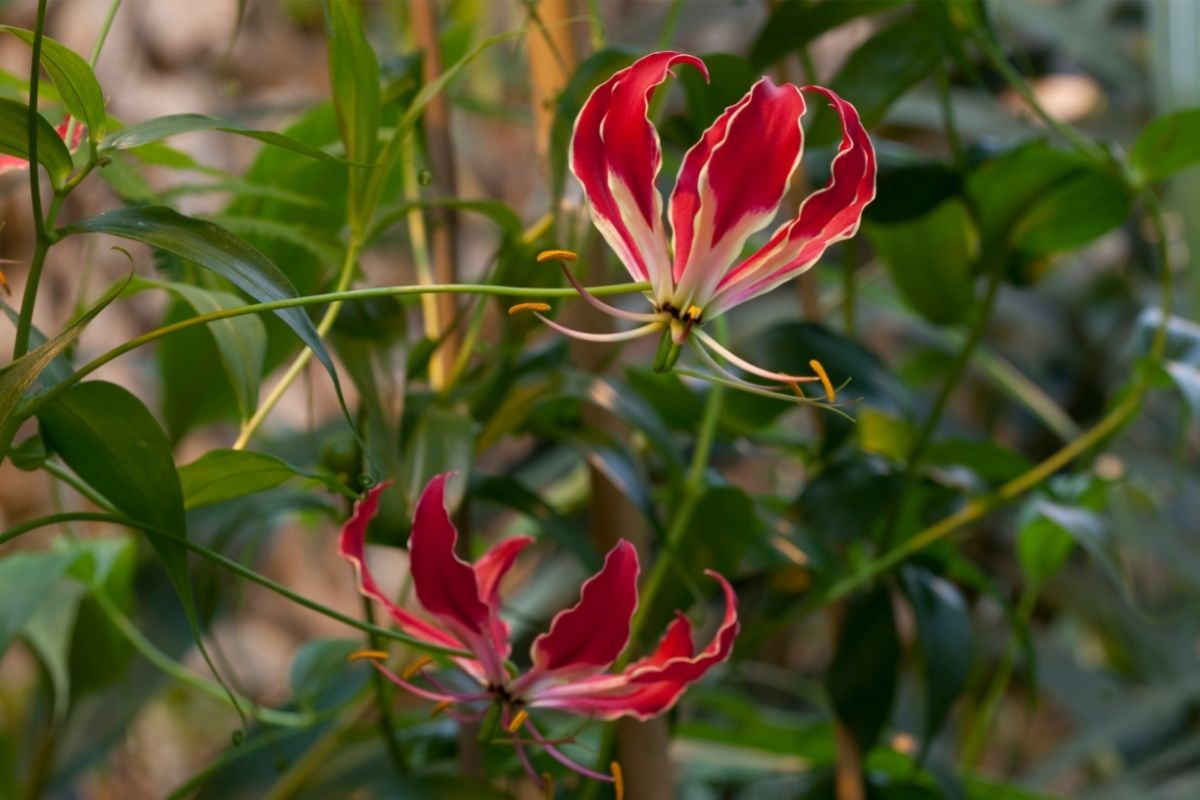
The Gloriosa Lily, like the Calla Lily, isn’t a true lily. Instead, it’s part of the Colchicaceae family. This doesn’t make the flower any less beautiful, though! Also known as the fire lily, Gloriosa superba is a bright red flower with wavy edges and long, yellow stamens.
21. Mother In Law’s Tongue (Dracaena Trifasciata)
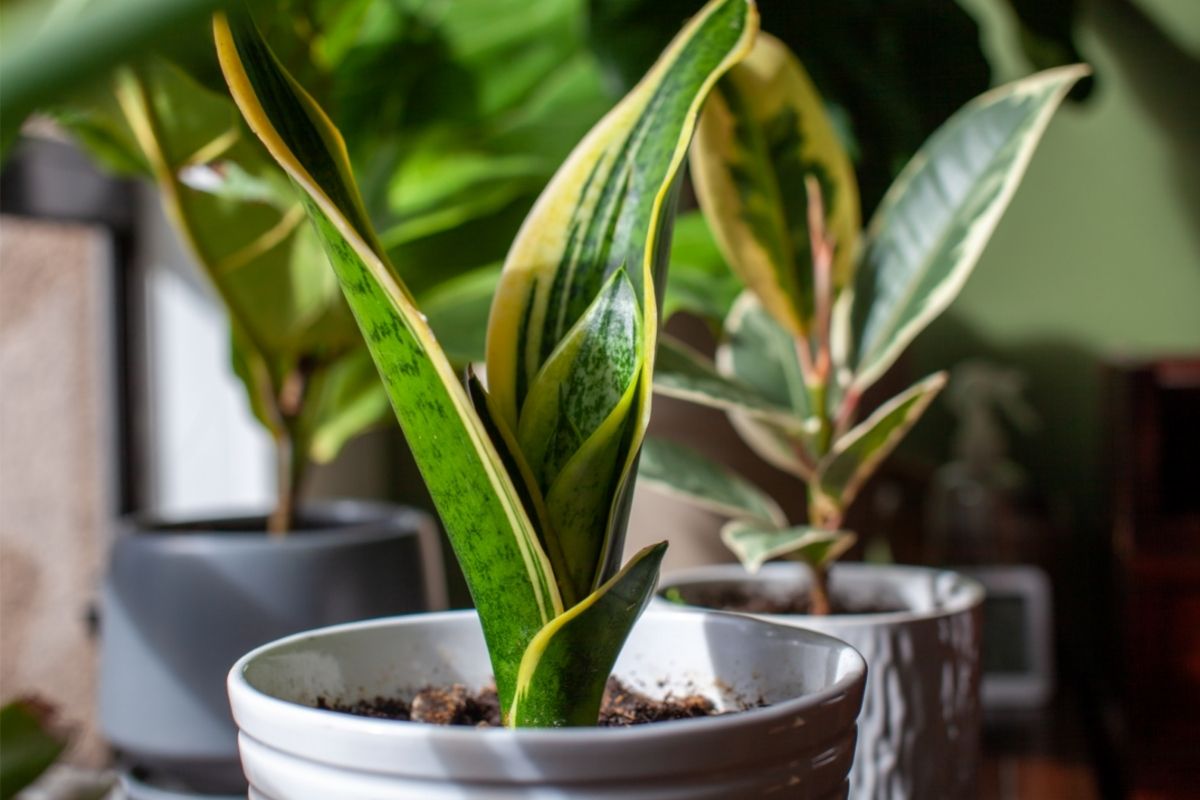
Mother In Law’s Tongue grows in Nigeria, but it’s a common houseplant almost worldwide because of how well it tolerates different climates and conditions. It’s a fairly low-maintenance flowering plant, which is part of the reason why it’s such a popular choice.
22. Cactus (Cactaceae)
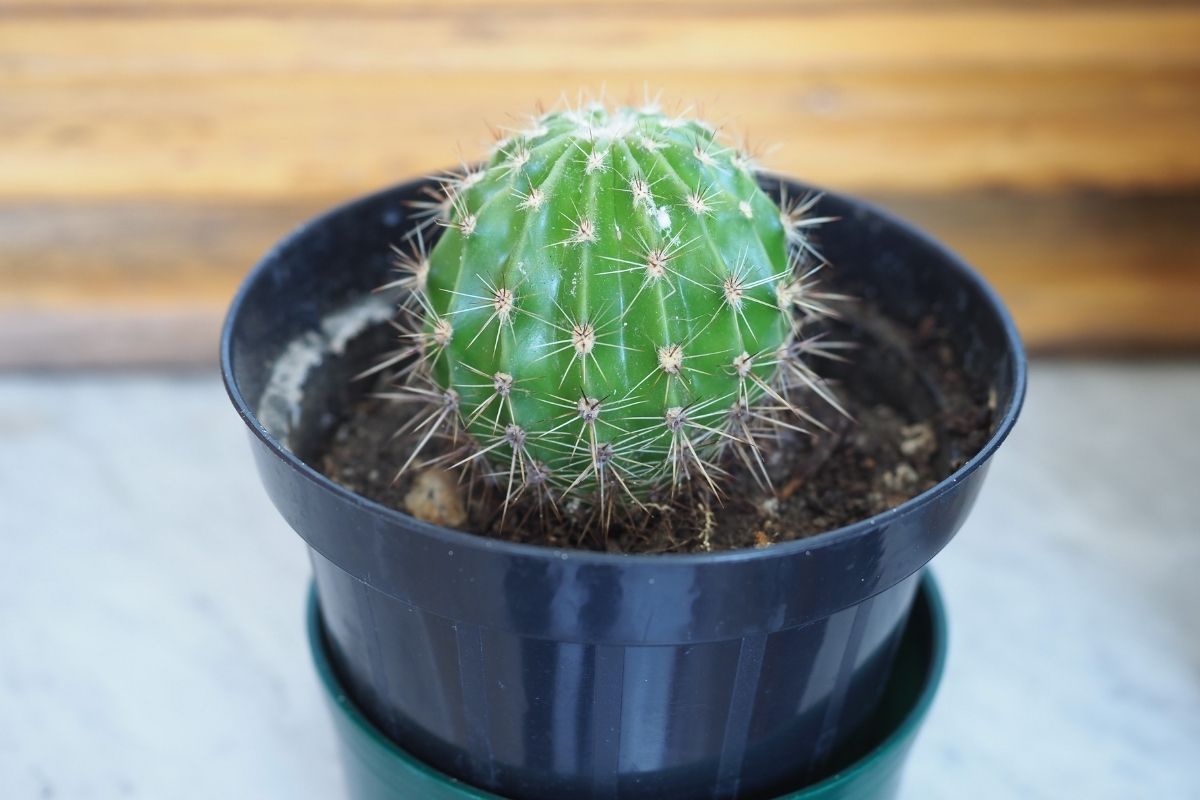
There is no shortage of cacti in Nigeria! So much so, in fact, that we’d have a difficult time naming all the individual species that are present in this country. Recently, the Nigerian government made the scientifically-informed decision to use Cactus opunita to help rectify desertification in the Northern regions.
23. Baby’s Breath (Gypsophila Paniculata)
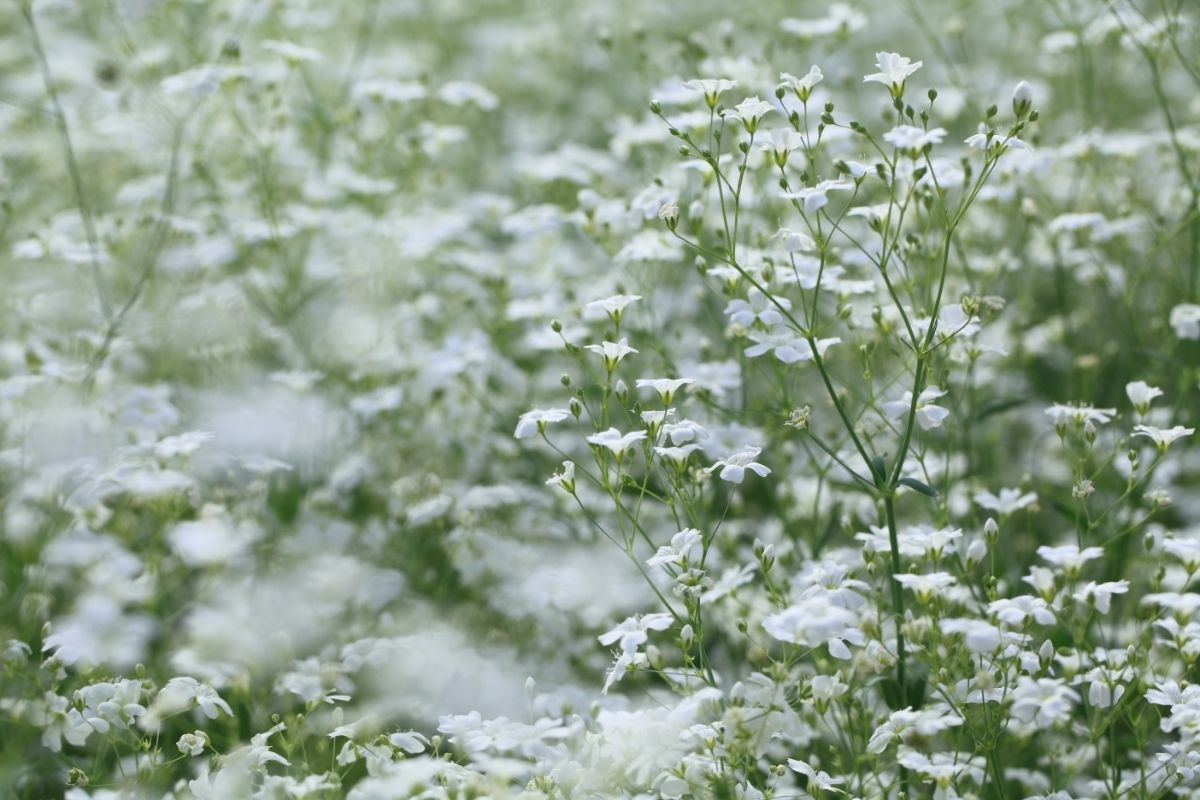
Baby’s Breath is one of the most delicate-looking flowers in the world, but you’d be surprised at how hardy this flowering plant can be!
Not only does Baby’s Breath survive intense temperatures in Nigeria, but the blooms can survive for up to 14 days after the flowers have been cut! It is a perennial plant that grows best in thick soil.
24. Orchid (Orchidaceae)
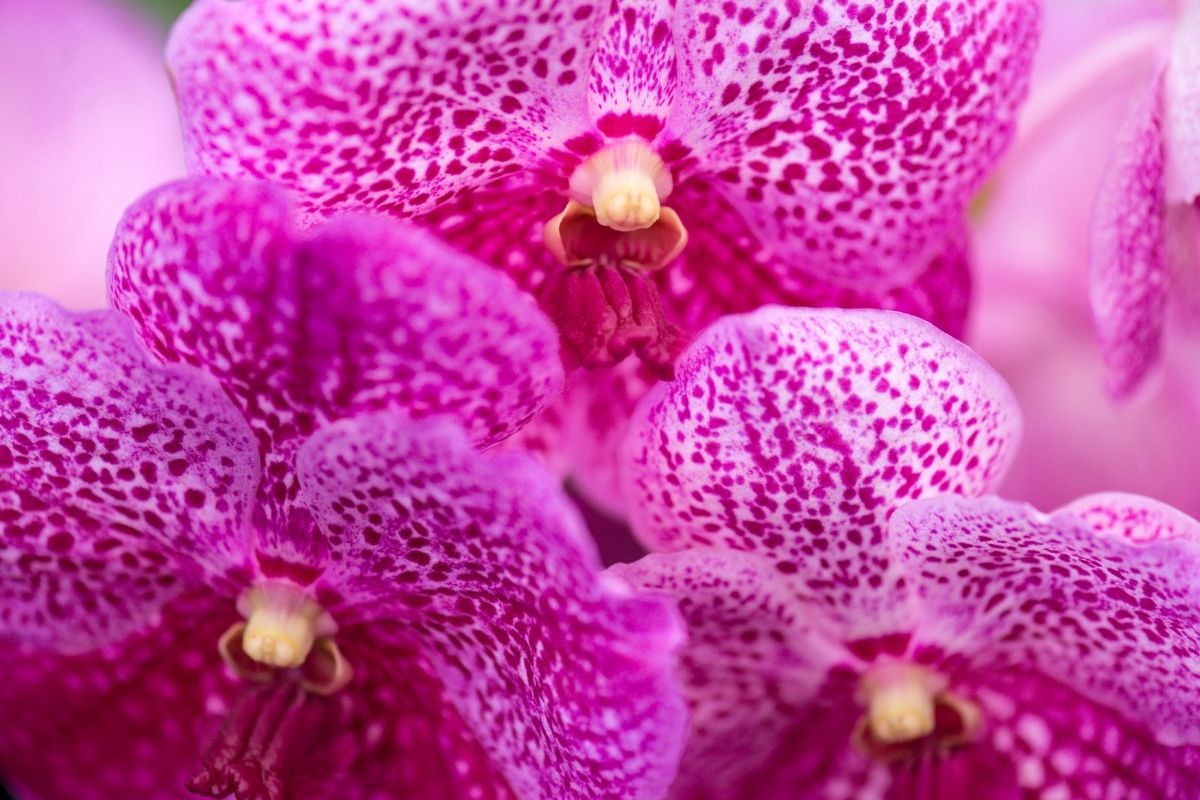
Orchids abound in Nigeria. The Orchid plant has occasionally been reported to live for more than 100 years, although the average lifespan is just 2 or 3 months.
kept as houseplants or carefully tended to in the right garden environment, an Orchid can live for many decades. Did you know that Orchids were some of the first flowering plants to be officially discovered?
25. Bird Of Paradise (Strelitzia Reginae)

Bird of Paradise can be identified very easily because of its interesting shape and very bright yellow coloring. Although the flower does not come into bloom until the plant has reached maturity, which can sometimes take more than 8 years, the end results are worth the wait.
Since this plant thrives in direct sunlight, the warmer months in Nigeria make for the perfect conditions for Bird of Paradise to bloom.
Final Thoughts
We hope you have enjoyed our list of 25 of the most interesting plants found in Nigeria. While not all of these plants are from Nigeria originally, they are all common sights in the country, possibly because the warm climate mirrors some of the tropical and subtropical climates to which they are accustomed.
Be aware that some of these plants may be poisonous, so do your due diligence before bringing one of these Nigerian flowers into your environment.







